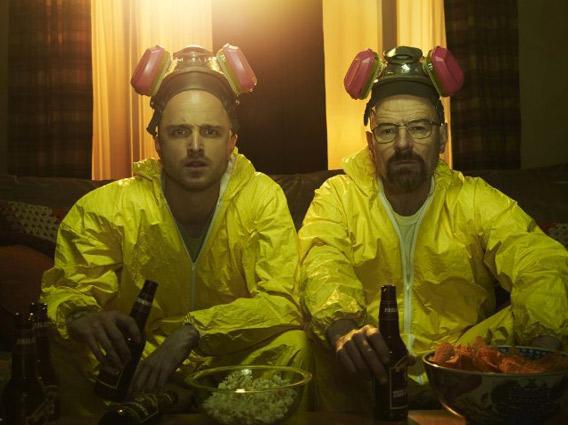Breaking Bad premiered Sunday night and 5.9 million watched, an absolutely huge number for the show as well as for most cable dramas. That’s almost four times the amount of people who watched Breaking Bad’s very first episode five seasons ago (1.4 million) and nearly double the amount of people who watched its most recent season finale (3 million). That’s more people than watched the most recent Game of Thrones season-ender (5.5 million) and more than double the amount of people who watch Mad Men (2.7 million). This number is also—insofar as it’s possible to describe a dry rating statistic in these terms—heartwarming. If you build it, and it’s good, sometimes they really will come.
The ratings success of Breaking Bad shows that excellent programming can grow an audience, a big audience, if treated with proper patience. Breaking Bad is now such a phenomenon that Rihanna is Instagramming about it, but that is the work of many, many seasons. Breaking Bad’s network-mate Mad Men needed just one year to become a water-cooler series, but Breaking Bad, like The Wire, needed many more. Well through Season 3, it was frequently mentioned as the best show not enough people were watching. Luckily, because Breaking Bad is on AMC, a network happy with the show’s critical acclaim and solid-enough performance, it had the time to foster the audience it deserves—a luxury many dramas, especially network ones, don’t have these days.
Breaking Bad is also, perhaps, proof of what a really propulsive plot can get you. Mad Men was media-friendly and stylistically aspirational from the very start, but it does not have the same What happens next?! vibe as Breaking Bad, and its slower-growing audience reflects that. Don Draper looks great and deep, but there is still nothing like a cliffhanger to make sure an audience checks in at the appointed time.
Credit for the rating boost doesn’t just go to Vince Gilligan’s awesome plotting or AMC’s rare patience: It also goes to Netflix. Breaking Bad’s ratings suggest a seriously symbiotic relationship between AMC and Netflix, where all of Breaking Bad’s past episodes have been available for binge-watching. One of the very few hard statistics Netflix has ever released has to do with Breaking Bad: The company’s chief content officer once said that 50,000 Netflix subscribers watched all 13 episodes of Breaking Bad’s fourth season the day before Season 5 premiered. One can only imagine the kind of binging that was going on in this last hiatus for the show to double its viewership.
But if Netflix helped push Breaking Bad to record ratings, showing that new-fangled platforms for watching TV really can benefit shows, not just couch potatoes, it does raise some questions about Netflix’s strategy with its own original series. Here is evidence that pent-up demand for more episodes of a great show can pay off, in eyeballs, in buzz, in money—but that’s a demand that Netflix, because it releases all episodes of its own original series at once, can never quite foster for itself, just other networks. Breaking Bad demonstrates that meting out a show slowly and giving audiences lots of time to catch up at their own pace can grow viewership. But it also proves that sometimes, insisting that same audience show up to watch exactly when a network says they should can energize it.
